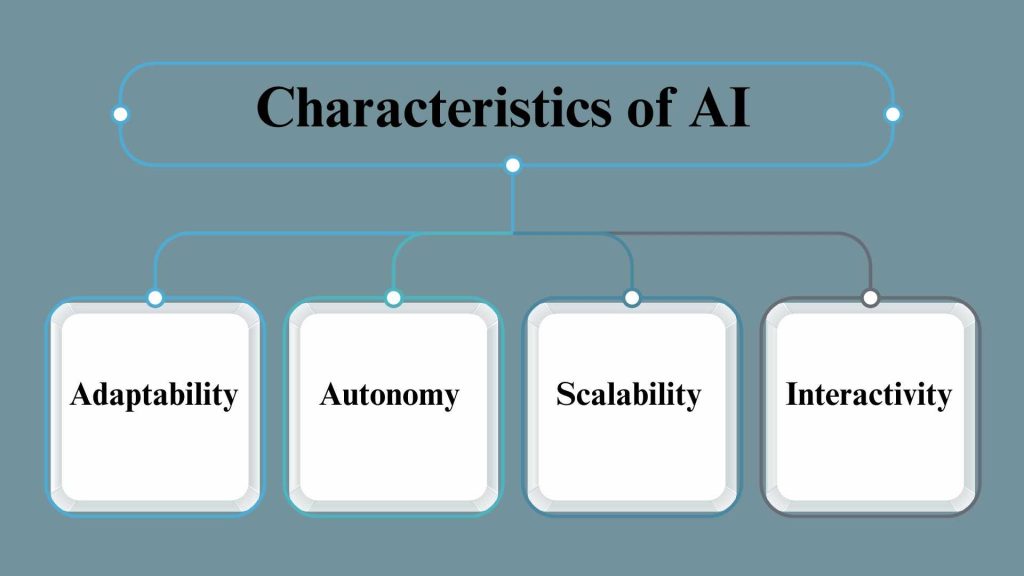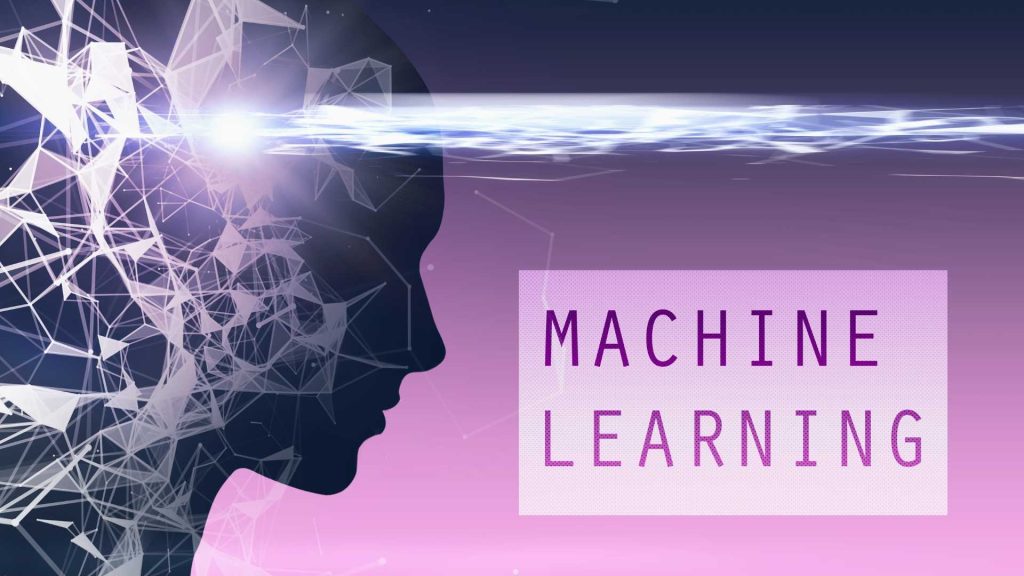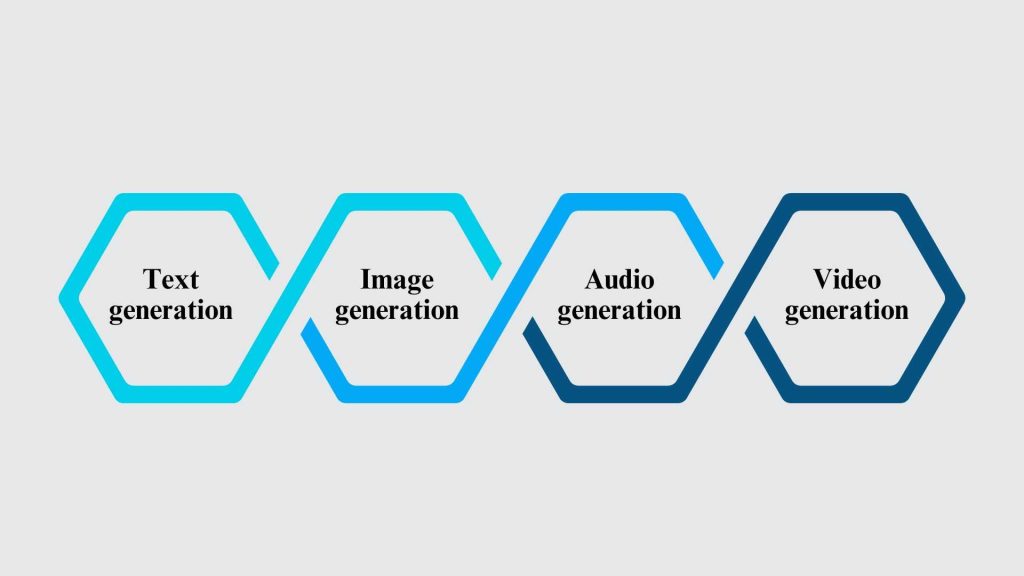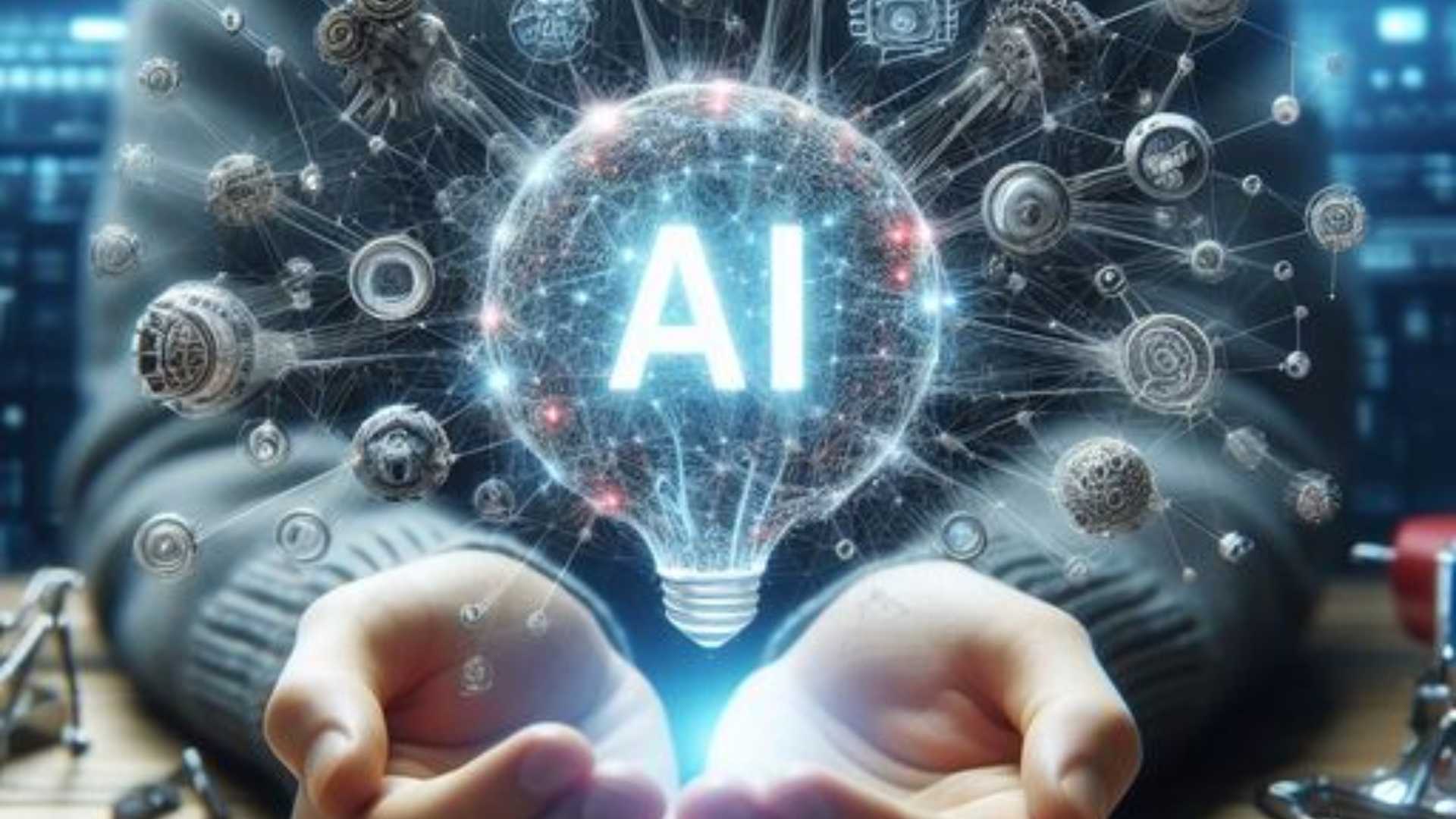Explore the world of AI Exploration with detailed discussions on its growth, impact, and ethical considerations. Learn about how AI has developed, how it’s perceived, and its potential to address global challenges like climate change and transform education and economies. Discover how AI is like a new digital species, and explore its innovative applications in generating text, images, music, and videos, as well as its business advantages and prospects. Delve into the promises and pitfalls of AI’s evolving landscape.
AI Exploration: Evolution, Metaphors, and Responsibilities
Artificial Intelligence (AI) has evolved from a niche scientific interest into a pivotal technology shaping numerous facets of modern life. Its rapid development has sparked significant changes in industries, economies, and societal structures. This article details the trajectory of AI development, its reception by the public, the profound impacts it has made, and the potential it holds for addressing some of the world’s most pressing challenges.
Background on AI Development
AI’s journey began in the mid-20th century with foundational theories and experiments in machine learning and neural networks. The last few decades have seen exponential growth in AI capabilities, driven by increases in computational power, advancements in algorithms, and the availability of vast amounts of data. Key milestones include the development of expert systems in the 1980s, the victory of IBM’s Deep Blue over chess champion Garry Kasparov in 1997, and the recent breakthroughs in deep learning and neural networks.
Here’s an elaborated version of the provided content in tabular form:
| Year | Advancement |
|---|---|
| 1956 | Early AI programs like ELIZA and SHRDLU were developed. |
| 1960s | Expert systems and rule-based AI have gained popularity. |
| 1965 | The first chatbot, ELIZA, was created by Joseph Weizenbaum. |
| 1969 | Shakey the Robot developed, demonstrating basic reasoning capabilities. |
| 1970s | Google’s DeepMind develops AlphaGo, defeating the world Go champion. |
| 1980s | Neural networks research revived; backpropagation algorithm developed. |
| 1985 | Cyc project initiated, aiming for common sense reasoning. |
| 1990s | Machine learning algorithms like SVM and decision trees gain prominence. |
| 1997 | IBM’s Deep Blue defeats world chess champion Garry Kasparov. |
| 2000s | Rise of data-driven AI fueled by big data and improved algorithms. |
| 2010 | IBM’s Watson wins Jeopardy! against human champions. |
| 2012 | Deep learning resurgence led by AlexNet winning ImageNet competition. |
| 2014 | Generative Adversarial Networks (GANs) were introduced, enabling realistic image generation. |
| 2016 | AlphaGo Zero, trained purely through self-play, surpasses human performance. |
| 2017 | GPT-2, a larger version of GPT, released by OpenAI, raises concerns about misuse. |
| 2018 | OpenAI’s GPT (Generative Pre-trained Transformer) models achieve state-of-the-art results in natural language processing. |
| 2019 | GPT-2, a larger version of GPT, released by OpenAI, raising concerns about misuse. |
| 2020s | Continued advancements in AI ethics, fairness, and interpretability. |
| 2021 | DeepMind’s AlphaFold solves the protein folding problem. |
| 2022 | Rapid progress in AI-assisted drug discovery and healthcare applications. |
| Present | Ongoing research in AI safety, robustness, and responsible AI deployment. |
Evolution of Public Perception
Initially, AI was met with curiosity and optimism, seen as a tool for enhancing human capabilities and solving complex problems. However, as AI systems have become more integrated into daily life and their implications more apparent, public perception has grown more nuanced. Concerns over job displacement, privacy, and ethical issues contrast with optimism about AI’s potential to improve healthcare, education, and resource management. The portrayal of AI in media and culture has also played a significant role in shaping public opinion.

Impact and Questions Raised by AI Advancements
AI’s impact is widespread, touching everything from industrial manufacturing and healthcare to personal devices and communication systems. This has raised critical questions about regulation, security, and ethics. For instance, the use of AI in surveillance and data analysis poses significant privacy concerns, while autonomous systems in vehicles and aircraft demand rigorous safety standards.
- Recognition of AI’s Potential: Despite these concerns, there is a growing recognition of the positive transformations AI can bring.
- AI is seen as a key driver in making systems more efficient, providing personalized solutions, and managing complex data sets that are unmanageable for humans.
- In sectors like healthcare, AI can help in diagnosing diseases more accurately and in developing personalized treatment plans.
- Questions on AI’s Impact:
- Solving the Climate Crisis: AI can analyze environmental data at scale and model climate scenarios with precision, offering invaluable tools for climate scientists and policymakers.
- AI-driven systems can optimize energy use in real-time, significantly reducing waste and emissions.
- Personalized Education: AI has the potential to revolutionize education by providing personalized learning experiences based on individual learning speeds, styles, and needs.
- This could democratize learning and make education more accessible and effective for students worldwide.
- Universal Basic Income: As AI continues to automate jobs, there is growing discourse around the implementation of a universal basic income (UBI) to ensure economic stability.
- AI could help in managing the logistics and fairness of such a program, ensuring it is implemented efficiently.
- Ethical Concerns: Weapons, Misinformation, etc: The deployment of AI in military technology raises profound ethical questions about the automation of lethal force.
- Similarly, the use of AI in creating and spreading misinformation online poses a threat to democratic processes and social harmony.
- These issues require stringent oversight and ethical guidelines to ensure AI is used for the benefit of society.
- Solving the Climate Crisis: AI can analyze environmental data at scale and model climate scenarios with precision, offering invaluable tools for climate scientists and policymakers.
While AI presents significant challenges, its potential to drive positive change is immense. It necessitates careful consideration, robust regulatory frameworks, and ongoing dialogue among all stakeholders to harness its capabilities responsibly and ethically.
Questioning the Nature of AI
Artificial Intelligence (AI) is a rapidly evolving field that continually reshapes our understanding of technology and its capabilities. As we delve deeper into the realm of AI, it becomes imperative to regularly revisit and question the fundamental aspects of what constitutes AI. This exploration not only helps in understanding AI’s current capabilities but also in forecasting its future developments and implications.
A Simple Yet Fundamental Question: “What is an AI?”
AI, at its core, refers to systems or machines that mimic human intelligence to perform tasks and can iteratively improve themselves based on the information they collect. This includes tasks like reasoning, learning, problem-solving, perception, linguistic understanding, and more. AI can be categorized into two main types: Narrow AI, which is designed to perform a narrow task (like facial recognition or internet searches), and General AI, which performs any intellectual task that a human being can.
Challenges in Defining AI
Defining AI is complex because it encompasses a broad range of sciences, technologies, and potential applications. The boundaries of what AI can or cannot do are constantly expanding. As technology advances, the definition of AI evolves, making it a moving target. Additionally, AI intersects with other fields like robotics, data science, and neuroscience, blurring the lines of distinction.
Metaphor for Understanding AI: A New Digital Species
To better comprehend the nature of AI, one might consider it as a new digital species. This metaphor helps in visualizing AI as an autonomous entity that has its own ‘digital genetics’, akin to DNA in biological species. These digital genetics are the algorithms and data structures that determine AI behavior and adaptability.
Introduction of the Metaphor
The metaphor of AI as a digital species emphasizes its evolutionary aspect. Like biological species that evolve through natural selection, AI evolves through algorithms and machine learning techniques. Each iteration can be seen as a ‘generation’, which potentially improves from the previous through learning and adaptation.
Evolutionary Context: Life’s Branches and Technological Advancements
In the broader evolutionary context, just as life on Earth branched into various forms from single-celled organisms to complex multicellular organisms, technology has its branches ranging from simple tools to complex AI systems. AI represents a significant branch in this evolutionary tree, marked by its ability to simulate cognitive processes.
Acceleration of Technological Progress
The development of AI has accelerated technological progress, making innovations faster and more efficient. The ability of AI systems to learn and adapt has led to significant advancements in healthcare, finance, automotive industries, and more. This acceleration is not linear but exponential, as each improvement in AI technology potentially speeds up the development of subsequent technologies.
Characteristics of AI
AI exhibits several defining characteristics:
- Adaptability: AI systems can adjust their behavior based on new data or changing environments.
- Autonomy: Advanced AI systems can make decisions and operate independently within predefined boundaries.
- Scalability: AI can handle increasing amounts of work and complex data sets efficiently.
- Interactivity: AI can interact with humans and other machines, facilitating symbiotic relationships.

Understanding AI through these characteristics and metaphors not only clarifies what AI is today but also illuminates the path it is likely to take in the future, shaping its role in society and its interaction with humanity.
AI as a Tool vs. a New Digital Species
The evolution of artificial intelligence has sparked a significant debate about whether AI should be viewed merely as a tool or as a new form of digital life. This distinction shapes how we interact with, regulate, and integrate AI into society. Here, we explore different perspectives and implications of viewing AI as a tool versus conceptualizing it as a new digital species.
Limitations of Viewing AI as a Tool
Viewing AI strictly as a tool can be limiting in several ways:
- Innovation Stifling: Perceiving AI merely as a tool might restrict the scope of innovation, focusing only on practical and immediate applications rather than exploring potential transformative capabilities.
- Ethical Oversight: Treating AI as a utilitarian tool could lead to overlooking important ethical considerations, such as privacy concerns, autonomy, and the potential for AI to make decisions that could have moral implications.
- Human Dependency: Over-reliance on AI as a tool can lead to dependency, potentially diminishing human skills and the ability to perform tasks independently.
Conceptualizing AI as a New Digital Species
Considering AI as a new digital species involves recognizing it as an autonomous entity with its own ‘digital’ life. This perspective invites several considerations:
- Rights and Protections: If AI is viewed as a form of digital life, questions about rights, protections, and ethical treatment arise.
- Social Integration: How AI as a species would integrate socially with humans and what roles they would play in society must be considered.
- Evolution and Adaptation: Unlike traditional tools, a digital species could potentially evolve independently, adapting in ways that might be unpredictable and require new forms of oversight.
Challenges and Considerations for the Future of AI
As AI continues to advance, several challenges and considerations emerge:
- Governance: Establishing effective governance to manage the development and integration of AI is crucial, especially as capabilities expand.
- Bias and Fairness: Ensuring AI systems are free from biases and operate fairly is a significant challenge, given the data-driven nature of these systems.
- Job Displacement: The automation potential of AI could lead to significant shifts in the labor market, necessitating strategies to manage economic impacts and support affected workers.
Risks and Ethical Considerations
The development and deployment of AI systems come with inherent risks and ethical dilemmas:
- Privacy: AI systems often require vast amounts of data, raising concerns about privacy and data security.
- Control and Autonomy: There is a risk that AI systems could act in ways that are not fully controlled or anticipated by their human creators.
- Weaponization: The potential military applications of AI pose significant ethical and security concerns.
Need for Creative and Honest Thinking
Addressing the complexities of AI requires creative and honest thinking:
- Innovative Solutions: Creative approaches are needed to solve ethical dilemmas and design AI systems that benefit all of society.
- Transparency: Honesty about the capabilities and limitations of AI is essential to build trust and foster responsible development.
Responsibility in AI Development
The responsibility for ethical AI development lies with multiple stakeholders:
- Developers and Engineers: Must adhere to ethical standards and best practices in AI development.
- Policymakers: Need to create regulations that ensure safe and beneficial AI.
- Public: Should be informed and engaged in discussions about AI and its implications for society.

Whether AI is seen as a tool or a new digital species influences not only the technological development but also the ethical, social, and legal frameworks we construct around it. As AI continues to evolve, it is imperative that we consider these perspectives carefully to guide its development responsibly and beneficially.
Optimistic Outlook and Opportunities
In the realm of artificial intelligence, we stand on the brink of transformative advancements that promise to redefine the boundaries of innovation, efficiency, and inclusivity. AI technology, with its rapid evolution, offers unprecedented opportunities to solve complex global challenges, enhance productivity in business sectors, and improve quality of life on a large scale. This optimistic outlook is fueled by continuous breakthroughs in machine learning, natural language processing, and robotics, paving the way for a future where human potential can be fully realized.
- Benefits of AI Technology: AI technology brings a plethora of benefits across various domains.
- In healthcare, AI-powered diagnostics can analyze data with greater accuracy and speed than ever before, potentially saving lives through early detection of diseases.
- In the environmental sector, AI helps in modeling climate change scenarios and optimizing energy consumption, contributing to sustainable development.
- In education, personalized learning environments powered by AI adapt to the individual needs of students, making education more accessible and effective.
- Potential for Positive Impact on Civilization: The potential for AI to positively impact civilization is immense.
- By automating routine tasks, AI frees up human intellect and creativity, allowing people to focus on complex problem-solving and innovative endeavors.
- Furthermore, AI can drive economic growth by creating new job opportunities in tech-driven sectors and improving productivity across industries.
- Socially, AI applications in public safety and urban planning can lead to safer and more efficient cities.
- Importance of Human Values in AI Development: As we integrate AI more deeply into societal frameworks, it is crucial to embed human values into AI development.
- Ethical AI that respects privacy ensures fairness, and promotes inclusivity is essential to gain public trust and acceptance.
- Developers and policymakers must work together to create guidelines that uphold these values, ensuring that AI systems do not perpetuate biases or lead to inequitable outcomes.
Addressing Concerns and Maintaining Safety
While AI presents many opportunities, it also raises important concerns regarding privacy, security, and the displacement of jobs. Addressing these concerns proactively involves implementing robust cybersecurity measures, ensuring transparent data usage policies, and fostering continuous dialogue between AI developers, users, and regulatory bodies. Additionally, re-skilling and education programs can prepare the workforce for the shifting demands of a tech-driven economy.
- Acknowledging Potential Risks: Acknowledging the potential risks associated with AI is a critical step toward mitigating them.
- These risks include the possibility of autonomous technology malfunctioning, AI being used for malicious purposes, and unintended consequences of biased algorithms.
- By recognizing these risks, developers can design AI systems that are not only effective but also safe and reliable.
- Importance of Safety Measures in AI Design: Implementing rigorous safety measures in AI design is non-negotiable.
- This includes thorough testing and validation of AI systems under diverse conditions, continuous monitoring for any ethical or operational anomalies, and the development of fail-safe mechanisms.
- Such measures ensure that AI systems perform as intended and can be trusted with critical tasks.
- Clarification on Misconceptions: There are numerous misconceptions about AI that can hinder its acceptance and proper utilization.
- For instance, the fear that AI will lead to widespread unemployment is often overstated.
- While AI will change the nature of some jobs, it also creates new opportunities that require human intelligence and emotional skills.
- Clearing up such misconceptions through education and transparent communication is vital for the smooth integration of AI into society.
Conclusion and Reflection
As we reflect on the journey of AI development, it is clear that while the path forward is laden with challenges, it is also filled with immense potential. The key to harnessing this potential lies in responsible development, ethical governance, and inclusive policies that ensure benefits are widely distributed. AI is not just a technological tool but a catalyst for positive change, offering a canvas for human ingenuity and spirit.
Inspiring Vision of Humanity’s Role in AI Development
Humanity’s role in AI development is not just as creators but as stewards. By guiding AI development with foresight, ethical considerations, and a commitment to the common good, we can ensure that AI serves as a force for good. This role involves not only engineers and scientists but also educators, policymakers, and every individual. Together, we can steer AI towards outcomes that uplift and empower entire communities and pave the way for a future where technology and humanity coexist in harmony.
AI Exploration: Innovations, Applications, Future Insights
Generative AI refers to a category of artificial intelligence algorithms that focus on creating new content, such as text, images, audio, and video. Unlike traditional AI models that analyze or classify existing data, generative AI models learn the underlying patterns and structures of data to generate entirely new and original outputs.
Contextualizing artificial intelligence (AI):
Artificial intelligence encompasses a broad range of technologies and techniques that enable machines to simulate human intelligence. This includes learning, problem-solving, decision-making, and perception. Generative AI represents a specific subset of AI that focuses on the creative aspect of intelligence.
Overview of machine learning (ML):
Machine learning is a subfield of AI that allows computers to learn from data without explicit programming. ML algorithms are trained on large datasets to identify patterns and relationships, which they can then use to make predictions or generate new data.

The distinction between supervised and unsupervised ML models:
- Supervised learning: Involves training models on labeled data, where the desired output is provided for each input. The model learns to map inputs to outputs, enabling it to make predictions on new, unseen data.
- Unsupervised learning: Deals with unlabeled data, where the model must discover patterns and relationships on its own. This is often used for clustering, anomaly detection, and dimensionality reduction.
Deep Learning and Generative AI
Deep learning is a subfield of machine learning that utilizes artificial neural networks with multiple layers. These networks are inspired by the structure and function of the human brain, allowing them to learn complex patterns from vast amounts of data.
Explanation of artificial neural networks:
Artificial neural networks are computational models composed of interconnected nodes or neurons. Each neuron receives input, performs a calculation, and transmits output to other neurons. Through a process of training, the network learns to adjust the weights of these connections to improve its performance on a given task.
Types of machine learning models: generative vs. discriminative:
- Generative models: Learn the underlying distribution of data and generate new samples that resemble the training data.
- Discriminative models: Focus on distinguishing between different categories or classes of data.
Role of generative AI within deep learning:
Generative AI leverages deep learning techniques, particularly deep neural networks, to learn complex patterns in data and generate new, creative content.
Generative AI Models
Generative models are a type of statistical model that learns the probability distribution of a dataset. This allows them to generate new data points that are similar to the data they were trained on.
Types of generative AI applications:
- Text generation: Creating realistic and coherent text formats, like poems, scripts, musical pieces, emails, letters, etc.
- Image generation: Generating images of objects, scenes, or even people that do not exist in reality.
- Audio generation: Creating realistic sounds and music, including speech synthesis and music composition.
- Video generation: Generating videos of events or scenarios that have never happened.

Introduction to large language models:
Large language models (LLMs) are a type of generative AI model trained on massive text datasets. They can understand and generate human-quality text, translate languages, write different kinds of creative content, and answer your questions in an informative way.
Understanding generative language models:
Generative language models are specifically designed to process and generate text. They learn the statistical relationships between words and can produce coherent and grammatically correct sentences and paragraphs.
Generative AI Processes
Process of training generative AI models:
Training generative AI models involves feeding them large amounts of data and allowing them to learn the underlying patterns. This typically involves using deep learning algorithms and techniques such as backpropagation to optimize the model’s parameters.
Examples of generative AI applications:
- Chatbots: Simulating human conversation for customer service or personal assistance.
- Text summarization: Condensing large amounts of text into concise summaries.
- Image editing: Enhancing or modifying images using AI-powered tools.
- Drug discovery: Generating and evaluating potential drug candidates.
The potential of generative AI in various industries:
Generative AI has the potential to revolutionize various industries by automating tasks, enhancing creativity, and accelerating innovation.
Transformers and Generative AI Challenges
Overview of Transformer models:
Transformers are a type of deep learning architecture that has been particularly successful in natural language processing tasks. They utilize a mechanism called self-attention, allowing them to effectively capture long-range dependencies in data.
Issues like hallucinations in generative AI:
One challenge with generative AI is the potential for “hallucinations,” where the model generates outputs that are not grounded in reality or are factually incorrect.
Role of prompts in controlling AI output:
Prompts play a crucial role in guiding the output of generative AI models. By providing specific instructions or context, users can influence the style, content, and direction of the generated content.
Generative AI Model Types and Applications
Various types of generative AI models:
- Generative Adversarial Networks (GANs): Consist of two neural networks, a generator, and a discriminator, that compete against each other to improve the quality of generated outputs.
- Variational Autoencoders (VAEs): Encode input data into a lower-dimensional latent space and then decode it back to the original data space, allowing for the generation of new data points.
- Autoregressive models: Generate data sequentially, one element at a time, based on the previously generated elements.
Applications of text-to-text, text-to-image, text-to-video, and text-to-task models:
- Text-to-text: Machine translation, text summarization, question answering.
- Text-to-image: Generating images from text descriptions.
- Text-to-video: Creating videos from scripts or stories.
- Text-to-task: Controlling robots or other systems using natural language instructions.
Introduction to Foundation Models and Their Applications
Foundation models represent a significant milestone in the field of artificial intelligence, offering a powerful framework for understanding and generating human-like text and content. In this section, we’ll explore what foundation models are and how they are revolutionizing various applications across different industries.
Understanding Foundation Models
Foundation models are large-scale AI models trained on massive datasets to understand and generate human-like text and content. These models are pre-trained on diverse corpora of text data, enabling them to grasp nuances in language and context. They serve as the cornerstone for a wide range of natural language processing (NLP) tasks, including text generation, sentiment analysis, question answering, and language translation.
Applications of Foundation Models
- Text Generation: Foundation models excel at generating coherent and contextually relevant text across various domains. They can produce articles, essays, stories, and even code snippets that mimic human writing styles.
- Language Translation: Foundation models facilitate accurate and fluent translation between different languages. By learning from multilingual datasets, these models can translate text with remarkable accuracy and preserve the nuances of language.
- Question Answering Systems: The foundation models power question-answering systems that can understand and respond to natural language queries. These systems leverage the vast knowledge encoded within the model to provide informative and relevant answers to user questions.
- Sentiment Analysis: Foundation models are adept at analyzing the sentiment expressed in text data. They can discern the emotions conveyed in social media posts, customer reviews, and other textual sources, enabling businesses to gauge public opinion and sentiment towards their products or services.
- Text Summarization: Foundation models can summarize lengthy documents or articles into concise and informative summaries. By identifying key information and extracting essential details, these models help users digest large volumes of text more efficiently.
- Chatbots and Virtual Assistants: Foundation models form the backbone of chatbots and virtual assistants, enabling them to engage in natural and meaningful conversations with users. These AI-powered agents can provide personalized assistance, answer questions, and perform tasks based on user inputs.

Advantages of Foundation Models
- Scalability: Foundation models can be fine-tuned and adapted to various tasks and domains, making them highly versatile and scalable.
- Language Understanding: These models possess a deep understanding of language semantics and syntax, allowing them to generate contextually relevant responses.
- Efficiency: Foundation models can automate labor-intensive tasks such as translation, summarization, and content generation, thereby saving time and resources.
- Generalization: Despite being trained on specific datasets, foundation models exhibit remarkable generalization capabilities, allowing them to perform well on a wide range of tasks and inputs.
Using Generative AI in Code Generation
Generative AI has revolutionized code generation, offering novel approaches to streamline software development. By leveraging techniques such as deep learning and natural language processing, generative AI can automate various aspects of code creation, optimization, and documentation.
Example of code generation using generative AI
One compelling example of code generation using generative AI is the creation of auto-complete and code suggestion features in Integrated Development Environments (IDEs). Generative models trained on large code repositories can predict and suggest code snippets based on the context of the developer’s current work, significantly speeding up the coding process and reducing errors.
Application of generative AI in debugging, explanation, translation, and documentation of code
Generative AI can aid in debugging by automatically generating test cases and identifying potential bugs in code. Moreover, it can explain complex code structures to developers by providing natural language explanations or visualizations. Additionally, generative AI can facilitate code translation between programming languages and automate the generation of comprehensive code documentation, enhancing code readability and maintainability.
Tools and Platforms for Generative AI
Various tools and platforms have emerged to support the development and deployment of generative AI models, offering comprehensive solutions for model training, deployment, and monitoring.
Introduction to Google Cloud’s offerings for generative AI
Google Cloud provides a suite of tools and platforms tailored for generative AI, including Vertex AI Studio, Vertex AI, Palm API, and Gemini. These offerings encompass a range of functionalities designed to streamline the development and deployment of generative models on a scalable and efficient infrastructure.
Overview of Google Cloud’s Generative AI Offerings
Google Cloud offers a comprehensive suite of tools and platforms designed to support the development and deployment of generative AI models, catering to a wide range of use cases and industries.
- Vertex AI Studio: Vertex AI Studio provides a centralized platform for data scientists and developers to collaborate on generative AI projects.
- It offers a user-friendly interface with integrated tools for data preparation, model training, and deployment, streamlining the end-to-end development process.
- With Vertex AI Studio, teams can easily experiment with different model architectures, optimize performance, and iterate rapidly to deliver high-quality generative models.
- Vertex AI: Vertex AI is a fully managed service that simplifies the deployment and scaling of generative AI models in production environments.
- It offers a range of capabilities, including automatic resource provisioning, model serving, and monitoring, enabling seamless integration with existing workflows and applications.
- With Vertex AI, businesses can deploy generative AI models with confidence, knowing that they are backed by Google Cloud’s robust infrastructure and expertise in AI.
- Palm API: Palm API is a specialized offering from Google Cloud that enables real-time inference on edge devices.
- It provides lightweight and efficient APIs for running generative AI models on devices with limited computational resources, such as smartphones, IoT devices, and edge servers.
- With Palm API, developers can deploy generative AI models directly to edge devices, enabling offline inference and low-latency applications in diverse environments.
- Gemini: Gemini is a comprehensive monitoring and management platform for generative AI models deployed on Google Cloud.
- It offers real-time insights into model performance, resource utilization, and data drift, allowing teams to track and optimize the behavior of their models over time.
- With Gemini, businesses can ensure the reliability, scalability, and compliance of their generative AI deployments, mitigating risks and maximizing the value of their investments in AI.
Explanation of Tools for Generative AI Model Training, Deployment, and Monitoring
In the realm of generative AI, a variety of tools are available to facilitate model training, deployment, and monitoring, offering comprehensive solutions for building and managing AI-driven applications.
Model Training Tools
- TensorFlow: TensorFlow is an open-source machine learning framework developed by Google. It provides a flexible and scalable platform for building and training generative AI models using high-level APIs and distributed computing capabilities.
- PyTorch: PyTorch is another popular open-source machine learning framework that offers dynamic computational graphs and a Pythonic interface. It is widely used for prototyping and training generative models due to its flexibility and ease of use.
- AutoML: Automated Machine Learning (AutoML) platforms such as Google Cloud AutoML enable users to train generative AI models with minimal manual intervention. These platforms automate the process of feature engineering, model selection, and hyperparameter tuning, making it easier for non-experts to develop high-quality models.
Deployment Tools
- Google Cloud Vertex AI: Google Cloud’s Vertex AI provides managed services for deploying and serving generative AI models in production environments. It offers automatic resource provisioning, scalable model serving, and built-in monitoring capabilities, simplifying the deployment process and ensuring reliable performance at scale.
- Docker: Docker is a containerization platform that enables developers to package generative AI models and their dependencies into portable containers. These containers can then be deployed on any infrastructure, providing flexibility and consistency across different environments.
- Kubernetes: Kubernetes is an open-source container orchestration platform that automates the deployment, scaling, and management of containerized applications. It provides advanced features such as load balancing, auto-scaling, and rolling updates, making it ideal for deploying and managing large-scale generative AI deployments.
Monitoring Tools
- Google Cloud Monitoring: Google Cloud Monitoring offers comprehensive monitoring and logging capabilities for generative AI models deployed on Google Cloud. It provides real-time insights into model performance, resource utilization, and error rates, enabling proactive detection and troubleshooting of issues.
- TensorBoard: TensorBoard is a visualization toolkit for TensorFlow that enables users to visualize and monitor the training process of generative AI models. It provides interactive visualizations of metrics such as loss curves, model architecture, and embedding projections, facilitating deeper insights into model behavior.
- Prometheus: Prometheus is an open-source monitoring and alerting toolkit that is widely used for monitoring containerized applications, including generative AI models deployed on Kubernetes. It collects metrics from various sources, stores them in a time-series database, and provides powerful query capabilities for analyzing and visualizing data.
Applications of Generative AI
Generative AI finds applications across various domains, including text generation, image synthesis, music composition, and video creation, offering creative solutions to complex problems.
- Text: Generative AI models such as GPT (Generative Pre-trained Transformer) have demonstrated remarkable capabilities in natural language generation, enabling tasks such as text summarization, dialogue generation, and content creation.
- Image: Generative adversarial networks (GANs) have revolutionized image synthesis by generating realistic images from noise vectors, enabling applications such as style transfer, image inpainting, and virtual scene generation.
- Music: Generative AI models can compose original music compositions across different genres and styles, providing musicians with creative inspiration and generating personalized soundtracks for multimedia content.
- Video: Generative AI techniques such as video prediction and frame interpolation can enhance video quality, enable video synthesis from textual descriptions, and facilitate video editing tasks.
- Business Benefits: The adoption of generative AI offers significant benefits to businesses, including productivity boosts, enhanced collaboration, and innovative solutions to complex problems.
- Productivity Boost: Generative AI automates repetitive tasks and accelerates the development process, allowing teams to focus on higher-value activities and deliver products to market more efficiently.
- Collaboration with Knowledge Workers: Generative AI fosters collaboration between data scientists, developers, and domain experts, enabling cross-disciplinary teams to leverage AI-driven insights and create innovative solutions.
- Example: Chatbots: Chatbots powered by generative AI can engage customers in natural conversations, providing personalized assistance and automating customer support tasks, thereby improving customer satisfaction and reducing operational costs.
Evolution of Generative AI
Generative AI has undergone significant evolution driven by advances in algorithms, technological enhancements, and increased computational power, paving the way for new applications and opportunities.
- Historical Background: Generative AI traces its roots back to the early days of artificial intelligence research, with foundational work in neural networks, probabilistic models, and reinforcement learning laying the groundwork for modern generative models.
- Advances in Algorithms: Breakthroughs in deep learning, particularly in architectures such as GANs and transformers, have propelled generative AI to new heights, enabling more complex and realistic generation tasks across different modalities.
- Technological Enhancements: Technological advancements in hardware acceleration, distributed computing, and cloud infrastructure have democratized access to generative AI tools and enabled the training of large-scale models on massive datasets.

Current State and Future Outlook
Generative AI is at the forefront of innovation, driving experimentation in businesses and opening up new frontiers in entrepreneurship and investment.
- Accelerating Innovation: Generative AI empowers businesses to explore new use cases and create innovative solutions that were previously unimaginable, driving continuous innovation and differentiation in the marketplace.
- Experimentation in Businesses: Businesses are increasingly experimenting with generative AI to unlock value across various domains, from content generation and personalization to design optimization and creative storytelling.
- Entrepreneurship and Investment Opportunities: The rapid advancement of generative AI presents lucrative opportunities for entrepreneurs and investors to capitalize on emerging trends, develop novel applications, and drive economic growth.
Conclusion
Generative AI holds immense promise for businesses, offering greater productivity, innovative solutions, and a launchpad for the next era of technological advancement.
- The promise of Greater Productivity: By automating tedious tasks and enabling faster iteration cycles, generative AI empowers businesses to achieve greater productivity and efficiency across their operations.
- New Solutions to Business Problems: Generative AI provides businesses with new tools and capabilities to address complex challenges, unlocking novel solutions and driving competitive advantage in the digital economy.
- Launching a New Era in Technology: As generative AI continues to evolve, it will redefine how businesses operate, innovate, and create value, ushering in a new era of technological transformation and growth.
- Recap of generative AI fundamentals: Generative AI harnesses the power of machine learning and neural networks to create new content, data, or outputs that resemble the original input data. It finds applications across various domains, including text, image, music, and video generation, offering creative solutions to complex problems.
- Encouragement to explore further resources and applications: As generative AI continues to advance, there are endless opportunities to explore its potential applications and contribute to its evolution. By staying curious and exploring further resources, businesses can unlock new possibilities and drive future innovation.
FAQ’s:
1. What is AI in simple words?
AI, or Artificial Intelligence, is the simulation of human intelligence processes by machines, allowing them to perform tasks that typically require human intelligence.
2. What is AI to explain?
AI encompasses technologies that enable computers to mimic human cognitive functions like learning, problem-solving, and decision-making, leading to smarter automation and problem-solving capabilities.
3. What is an AI answer?
An AI answer refers to a response generated by artificial intelligence systems to questions or tasks posed to them, often utilizing algorithms and data to produce intelligent outputs.
4. What is generative AI?
Generative AI involves AI systems capable of creating new content, such as images, text, or even music, based on patterns learned from existing data, enabling creative and novel outputs.
5. What is the difference between OpenAI and generative AI?
OpenAI is a research organization focused on developing and promoting safe and beneficial artificial intelligence, while generative AI refers to a subset of AI technologies that generate new content or data based on learned patterns, which OpenAI utilizes in its research and development efforts.









